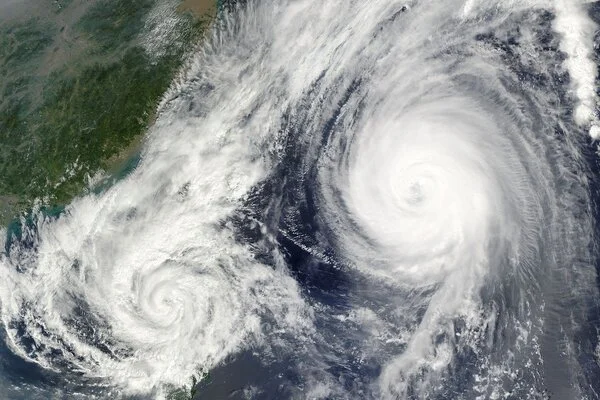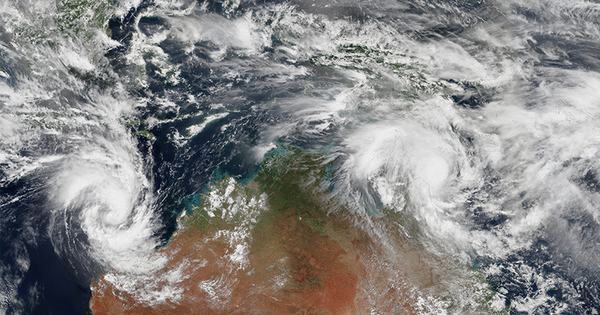The atmosphere is becoming more hostile to the formation of tropical cyclones as a result of global warming. By the early 2010s, there were approximately 13% fewer storms across all oceans than in the late 1800s. Climate change has resulted in a 13% decrease in the frequency of tropical cyclones since pre-industrial times, according to new research.
According to a new study published in Scientific Advances, human-caused climate change will make strong tropical cyclones twice as common by the middle of the century, putting large parts of the world at risk. According to the analysis, maximum wind speeds associated with these cyclones could increase by around 20%.
Tropical cyclones are complicated phenomena that form only under certain atmospheric and oceanic conditions. According to research, as the climate warms, changing conditions make tropical cyclones less common. However, the lack of long-term cyclone data makes quantifying this trend difficult.
The new tropical cyclone dataset we created will be extremely useful in mapping changing flood risk in tropical cyclone regions. The study could assist governments and organizations in better assessing the risk posed by tropical cyclones, assisting in the development of risk mitigation strategies to reduce impacts and loss of life.
Dr. Ivan Haigh
Tropical cyclones are relatively rare, despite being among the world’s most destructive extreme weather events. Only about 80-100 tropical cyclones form globally each year, the vast majority of which never make landfall. Furthermore, accurate global historical records are hard to come by, making it difficult to predict where they will occur and what steps governments should take to prepare.
To overcome this limitation, an international group of scientists involving Ivan Haigh from the University of Southampton developed a new approach that combined historical data with global climate models to generate hundreds of thousands of “synthetic tropical cyclones.”
Dr. Nadia Bloemendaal from the Institute for Environmental Studies, Vrije Universiteit Amsterdam, who led the study, said: “Our results can help identify the locations prone to the largest increase in tropical cyclone risk. Local governments can then take measures to reduce risk in their region, so that damage and fatalities can be reduced. With our publicly available data, we can now analyse tropical cyclone risk more accurately for every individual coastal city or region”

The researchers were able to much more accurately project the occurrence and behavior of tropical cyclones around the world over the next decades in the face of climate change by creating a very large dataset with these computer-generated cyclones, which have similar features to natural cyclones, even in regions where tropical cyclones hardly ever occur today.
According to the team’s analysis, the frequency of the most intense cyclones, those of Category 3 or higher, will more than double globally due to climate change, while weaker tropical cyclones and tropical storms will become less common in the majority of the world’s regions. The Bay of Bengal will be an exception, as researchers discovered a decrease in the frequency of intense cyclones.
Many of the most vulnerable areas will be in low-income countries. Countries where tropical cyclones are relatively rare today, such as Cambodia, Laos, Mozambique, and many Pacific Island Nations such as the Solomon Islands and Tonga, will face an increased risk in the coming years. Globally, Asia will see the largest increase in the number of people exposed to tropical cyclones, with additional millions exposed in China, Japan, South Korea and Vietnam.
“Of particular concern is that the results of our study highlight that some regions that do not currently experience tropical cyclones are likely to in the near future due to climate change,” said Dr. Ivan Haigh, Associate Professor at the University of Southampton.
“The new tropical cyclone dataset we created will be extremely useful in mapping changing flood risk in tropical cyclone regions.”
The study could assist governments and organizations in better assessing the risk posed by tropical cyclones, assisting in the development of risk mitigation strategies to reduce impacts and loss of life.





